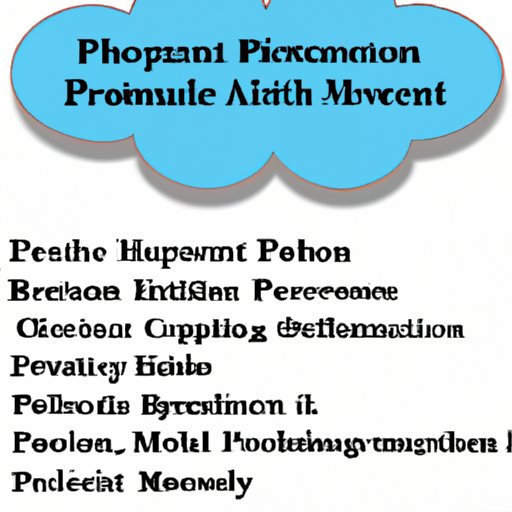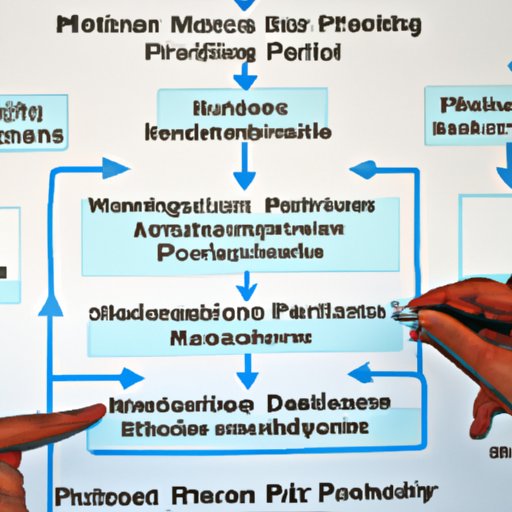Introduction
Population health management (PHM) is a healthcare strategy that focuses on improving outcomes for an entire population. This approach takes into account a variety of factors, ranging from social determinants of health to individual risk factors, in order to identify and address health disparities. The goal of PHM is to improve the overall health and wellbeing of a population while reducing healthcare costs.

Benefits of Population Health Management
PHM has numerous benefits. According to research published in The Journal of the American Medical Association, PHM can help reduce the cost of care, increase access to care, and improve the quality of care. Additionally, it can help healthcare providers better understand the needs of their patients and develop targeted interventions that address those needs. Finally, PHM can lead to improved health outcomes and reduced morbidity and mortality rates.
Overview of Population Health Management Strategies
There are several strategies that can be employed to implement PHM. These include modeling and analytics, care coordination, prevention and wellness programs, and risk stratification.
Modeling and Analytics
Modeling and analytics are used to collect and analyze data on a population’s health. This information is then used to identify areas of opportunity and develop strategies to improve health outcomes. For example, healthcare providers may use predictive analytics to identify which patients are at risk of developing certain conditions so they can intervene before the condition becomes severe.
Care Coordination
Care coordination is a key component of PHM. In this model, healthcare providers work together to ensure that patients receive the right care in the right setting. This includes coordinating care between primary care physicians, specialists, hospitals, and other healthcare providers. Care coordination helps to ensure that patients receive comprehensive, high-quality care that meets their individual needs.
Prevention and Wellness Programs
Prevention and wellness programs are designed to promote healthy behaviors among individuals and populations. These programs typically focus on lifestyle modifications, such as exercise and nutrition, as well as screenings and immunizations. Prevention and wellness programs can help reduce the incidence of chronic conditions and improve overall health outcomes.
Risk Stratification
Risk stratification is an important part of PHM. This process involves assessing an individual’s risk for certain health conditions and developing targeted interventions to minimize that risk. Risk stratification can help healthcare providers identify patients who are most likely to benefit from preventive care or intensive management.

Examining How Technology is Transforming Population Health Management
Technology is playing an increasingly important role in PHM. Several technologies, such as telehealth, wearables, remote monitoring, and electronic health records, are helping to improve the quality of care and reduce healthcare costs.
Telehealth
Telehealth is a technology that allows healthcare providers to deliver care remotely. This includes video visits, telephone consultations, and online messaging. Telehealth can help reduce the need for in-person visits and enable healthcare providers to provide more timely and convenient care.
Wearables
Wearable devices, such as fitness trackers and smart watches, are being used to monitor patients’ health. These devices can collect data on physical activity, sleep patterns, and heart rate. This data can then be used to identify potential health issues and inform treatment plans.
Remote Monitoring
Remote monitoring is another technology that is being used to improve PHM. This technology enables healthcare providers to monitor a patient’s vital signs from a distance. This can help to detect changes in health status earlier and allow for quicker intervention.
Electronic Health Records
Electronic health records (EHRs) are a crucial part of PHM. EHRs allow healthcare providers to store and access patient data quickly and securely. This data can then be used to identify health trends and develop targeted interventions.
Analyzing the Impact of Population Health Management on Healthcare Costs
PHM can have a significant impact on healthcare costs. Research published in The New England Journal of Medicine found that implementing PHM strategies can lead to cost savings of up to 10%. Additionally, PHM can lead to improved quality of care, as it enables healthcare providers to target interventions more effectively.

Investigating Different Models of Population Health Management
There are several different models of PHM that healthcare providers can use. These include patient-centered medical homes, accountable care organizations, and value-based care.
Patient-Centered Medical Home
The patient-centered medical home (PCMH) is a model of PHM that focuses on providing comprehensive, coordinated care. In this model, healthcare providers work together to develop personalized care plans for each patient. The PCMH model also emphasizes preventive care and patient education.
Accountable Care Organizations
Accountable care organizations (ACOs) are networks of healthcare providers that work together to provide coordinated, high-quality care. ACOs are financially incentivized to reduce costs and improve outcomes. They focus on preventive care and disease management, as well as patient education.
Value-Based Care
Value-based care is a model of PHM that focuses on providing high-quality care at a lower cost. This model uses evidence-based guidelines and metrics to measure the quality of care and evaluate its effectiveness. Value-based care also emphasizes preventive care and patient education.
Conclusion
Population health management is a healthcare strategy that focuses on improving outcomes for an entire population. This approach takes into account a variety of factors, including social determinants of health, in order to identify and address health disparities. There are several strategies, technologies, and models that can be used to implement PHM, including modeling and analytics, care coordination, prevention and wellness programs, telehealth, wearables, remote monitoring, and electronic health records. PHM can help reduce healthcare costs while improving the quality of care. Adopting a PHM approach can help healthcare providers provide better care to their patients while reducing costs.
(Note: Is this article not meeting your expectations? Do you have knowledge or insights to share? Unlock new opportunities and expand your reach by joining our authors team. Click Registration to join us and share your expertise with our readers.)
